The U.S. is recording more than 1,000 average COVID-19 deaths for the first time in five months as the fourth wave of the pandemic continues to sweep across the country.
On Monday, officials reported 908 virus-related fatalities with a seven-day rolling average of 1,011 – the third consecutive day that the average has topped four figures, which has not been seen since late March.
It also marks a 307 percent increase from the 248 average deaths reported four weeks ago, according to a DailyMail.com analysis of Johns Hopkins data.
Experts say that deaths are lagging indicator, meaning they tend to rise weeks after COVID-19 infections and hospitalizations do.
Coronavirus cases also continue to rise with 229,831 new cases reported on Monday and a seven-day rolling average of 150,098, which is a 161 percent increase from the 57,446 average seen 28 days prior.
The average is also the highest number reported since January 30, when the average sat at 150,960, according to the DailyMail.com analysis.
Meanwhile, hospitals are at their breaking points with doctors saying they are completely overwhelmed with patients and are struggling to find available beds.
Kentucky and Tennessee officials reveal they are seeing record numbers of COVID-19 hospitalizations and Alabama says infected people are filling half of all intensive are unit (ICU) beds in the state.

On Monday, the U.S. recorded 908 new COVID-19 deaths with a seven-day rolling average of 1,011, which marks the third consecutive day the average has topped 1,000 – the first time since March
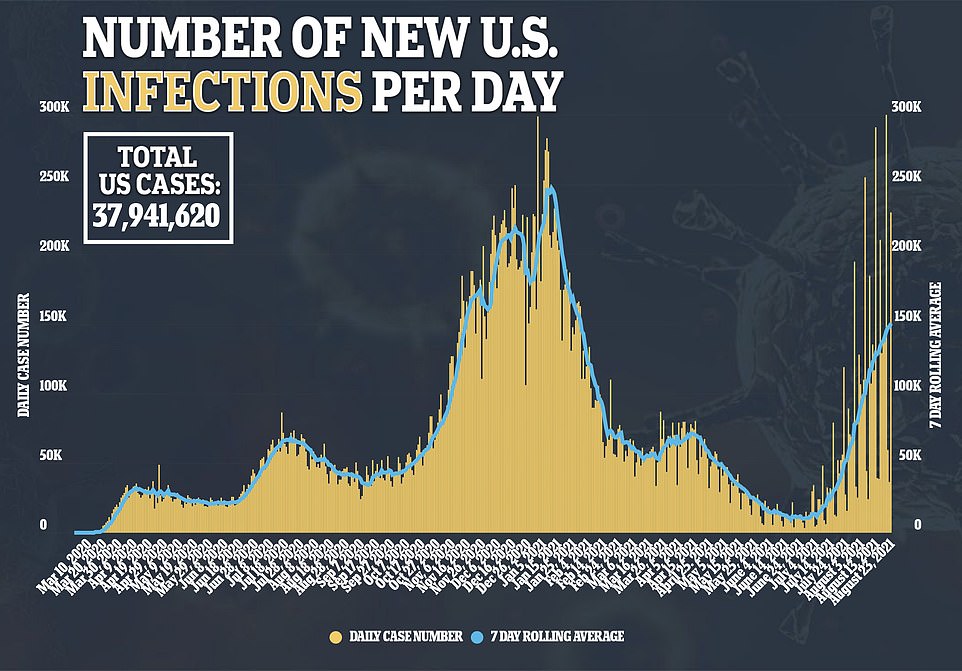
COVID-19 cases also increased with 229,831 new infections reported on Monday and a seven-day rolling average of 150,098, a 161% rise from four weeks prior
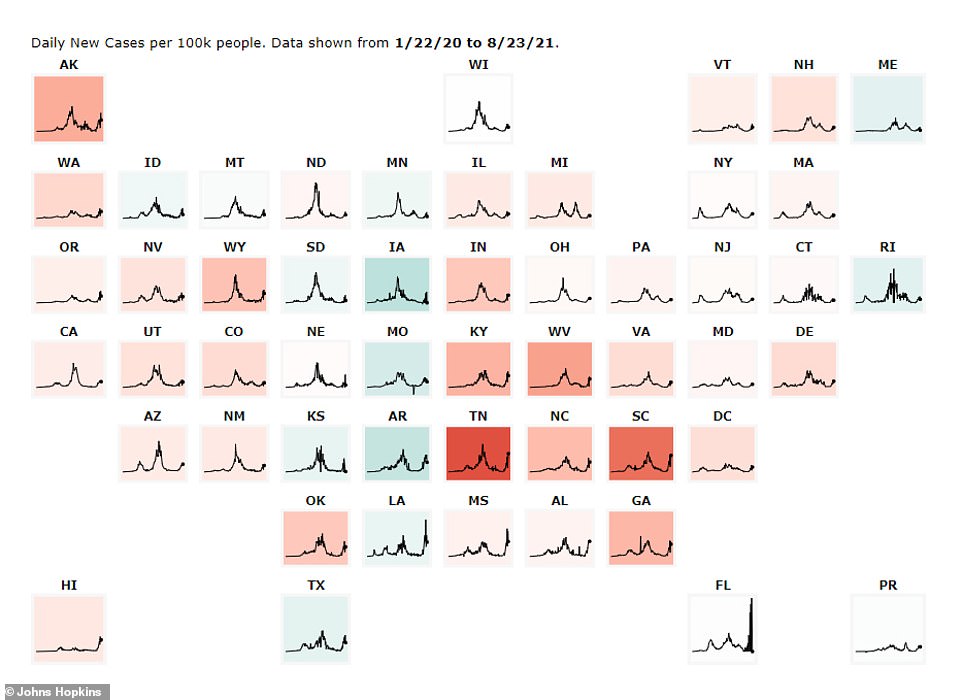
In Tennessee, average cases have risen over the last month from an average of 1,425 per day to an average of 6,870 per day – a jump of 382 percent, according to data from Johns Hopkins.
Hospitalizations have also surged over the same time period to a record-high of 2,802 patients, a 340 percent increase from 636 patients.
According to data from the Tennessee Department of Health, only 12 percent of hospital beds are available and just seven percent of ICU beds are available.
Last week, officials with the Tennessee Hospital Association released a statement saying the lack of beds may prevent residents from getting the care they need.
‘If you or a loved one need treatment for any type of serious healthcare problem like a severe injury, heart attack, or stroke, you may not be able to access the care you need, when you need it,’ the statement read.
At least 88 percent of COVID-19 hospitalizations and 94 percent of COVID-19 deaths are among unvaccinated Tennesseans, according to the THA.
‘The number one tool we have to protect ourselves and our community from COVID is vaccination,’ the statement read.
‘COVID-19 vaccines have been administered in Tennessee since late last year and have been proven safe and effective.’

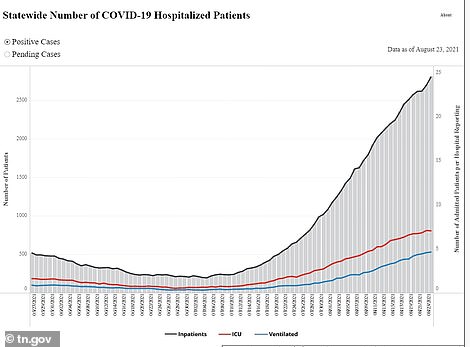
In Tennessee, average COVID-19 cases have risen from 1,425 per day to 6,870 per day – a jump of 382% in one month (left). Hospitalizations have also surged over the same time period to a record-high of 2,802 patients, a 340% increase from 636 patients (right)


In Alabama, average COVID-19 cases have increased over one month by 149% from 1,592 per day to 3,978 per day (left). COVID-19 hospitalizations have also skyrocketed by 276 percent from 733 patients on July 23 to 2,762 as of Sunday (right)
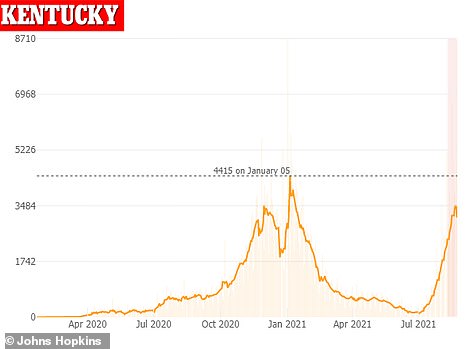

Kentucky recorded 2,596 new COVID-19 cases, a pandemic high for any Monday (left). Meanwhile, a record 1,893 virus patients are hospitalized in the state (right)
Meanwhile, in Alabama, average COVID-19 cases have increased over one month by 149 percent from 1,592 per day to 3,978 per day, Johns Hopkins data show,
At the same time, COVID-19 hospitalizations have skyrocketed by 276 percent from 733 patients on July 23 to 2,762 as of Sunday.
Alabama Hospital Association’s Dr Don Williamson told the Montgomery Advertiser on Monday that 53 percent of ICU beds in the state are filled with COVID-19 patients.
‘We’re now using as many ICU beds as we did in January, but we still have roughly 300 less people in the hospital,’ Williamson said.
‘It’s not rising as fast as it was. The rate of rise may have slowed, but ICU demand continues to increase.’
There are currently ‘negative’ beds available in the state with every one of the 1,536 staffed ICU beds full, but 1,589 patients in need of critical care.
According to the Alabama Department of Public Health, between April 1 and August 18, 89.8 percent of COVID-19 cases and 94.1 percent of COVID-19 deaths have occurred in unvaccinated residents.
‘Current data shows that fully vaccinated persons who get COVID-19 are much less likely to get severely ill, go to the hospital, or die from COVID-19,’ the health department said on Monday. ‘The COVID-19 vaccines are working.’
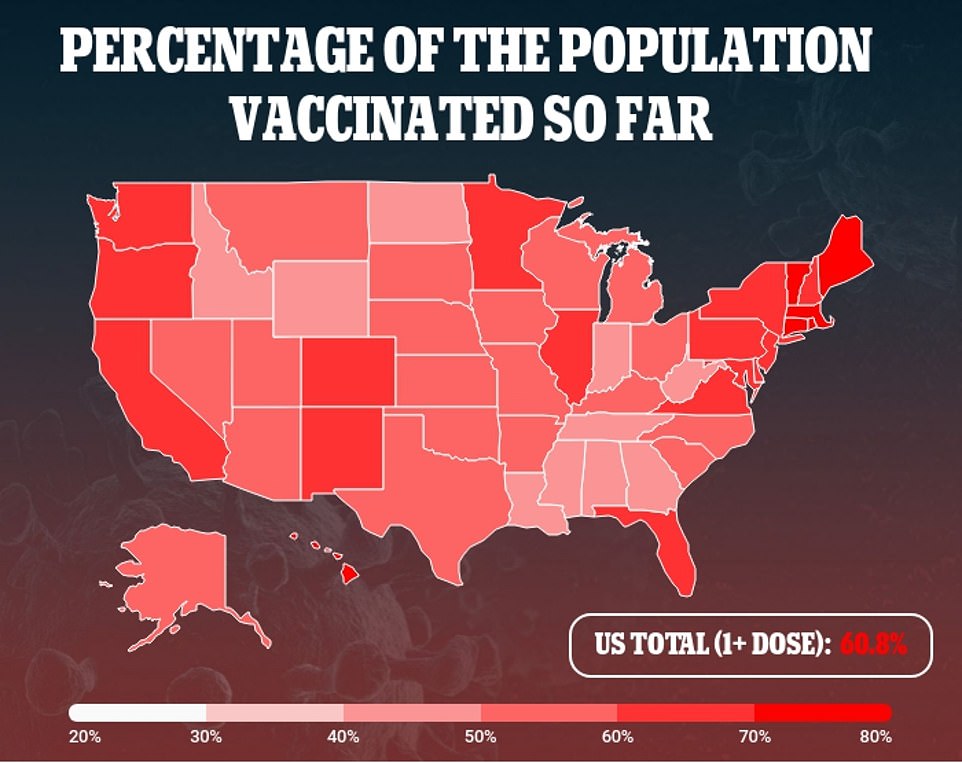
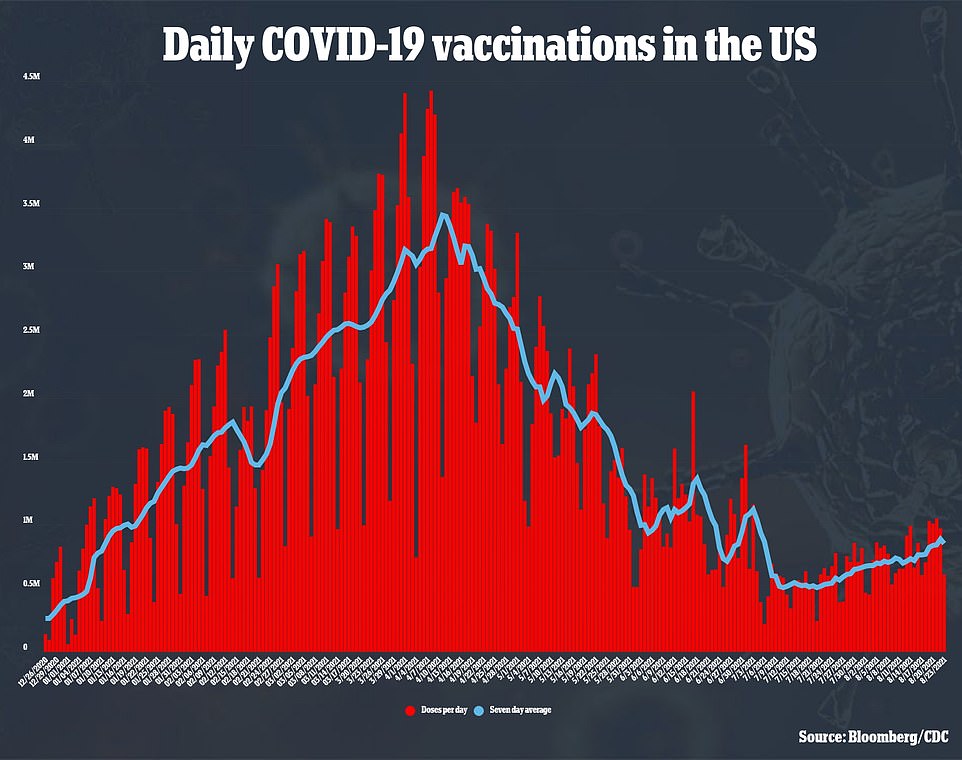
Kentucky was also hit with record numbers of COVID-19 patients in hospitals and intensive care units as cases are driven up by the fast-spreading Indian ‘Delta’ variant, Gov Andy Beshear said on Monday.
As of Monday, 1,893 virus patients were reported hospitalized, including 529 in intensive care units, of whom 301 are on ventilators.
Additionally, the state recorded 2,596 new COVID-19 cases – a pandemic high for any Monday in Kentucky – and 17 more virus-related deaths.
More than 20 hospitals in the state confronting critical staffing shortages, and some hospitals are converting space to treat the influx of ICU patients, the governor said.
‘Our hospitalizations have been doubling just about every two weeks,’ Beshear said at a news conference.
‘And folks, that means we are getting really close to every single bed across the entire commonwealth that we can staff being full.’
Beshear also said he is submitting a request to the Federal Emergency Management Agency for additional health care professionals to help where they are most needed.
Kentucky would receive eight teams comprised of eight registered nurses and two certified nursing assistants if the request is granted.
The teams would travel to Kentucky hospitals experiencing staffing and resource shortages. The request also would include two certified Emergency Management Services ‘strike teams’ to transport patients if they need care and the hospital where they seek it is full or under-resourced.
‘It appears that we are moving from alarming to a critical stage, and the future next couple weeks to couple months look like they’re going to be very, very rough,’ Beshear said.
‘Our hospital systems are reaching capacity while patient needs continue to rise exponentially.’
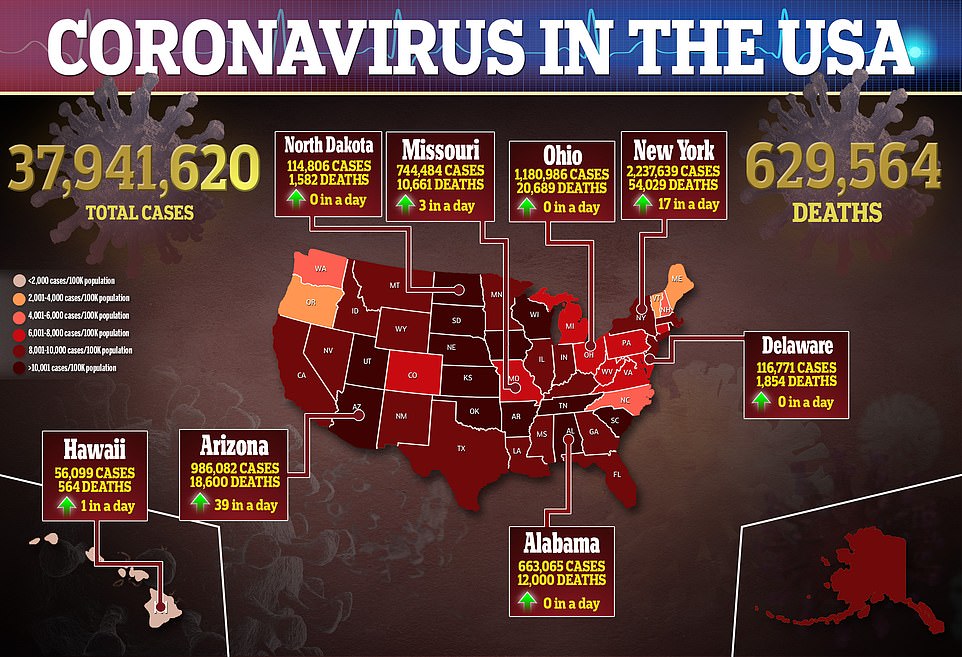
Source link : https://www.dailymail.co.uk/health/article-9922523/US-reports-1-000-average-Covid-deaths-three-consecutive-days-time-March.html











